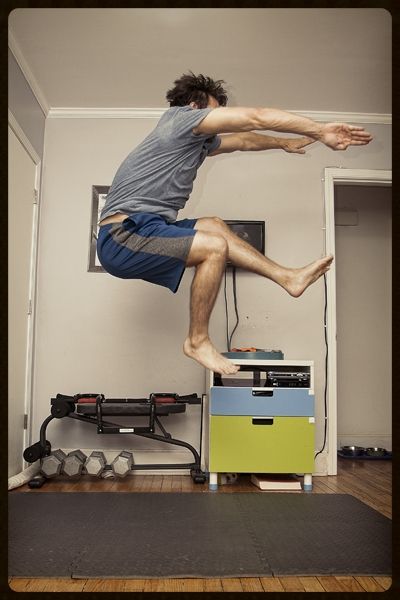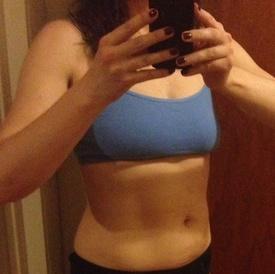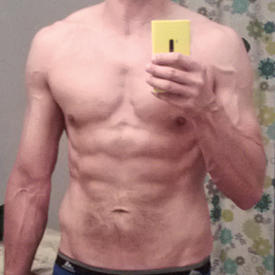You already have all the weight you need to squat
Options
Replies
-
No one's talking on SHRIMP squats?
Body weight squats are great to do, till they become easy. Then one is just working on muscular endurance. That's when you have to change the leverage or difficulty of them.
That said, I would guess that only 1 out of 20 people (conservative guess) who do weighted squats could perform a pistol squat. I'm experienced at them and I still struggle somewhat with them.
A.C.E. Certified Personal and Group Fitness Trainer
IDEA Fitness member
Kickboxing Certified Instructor
Been in fitness industry for 30 years and have studied kinesiology and nutrition
Specificity of training.
And you are correct. Like so many of these "debates" people are using apples to argue oranges, and vice versa.
The OP is essentially making an ideological argument, not a scientific one. It's like people arguing that one type of cardio is inherently "better" than another.
If the structure, intensity, and duration of a movement meets your goals, then it is appropriate. If it doesn't then it's not.
Saying that it is possible for some people to meet their fitness needs via bodyweight training only is completely valid.
Saying that, because doing a pistol squat is difficult, it is the equivalent of a heavy squat with a barbell is not.0 -
No one's talking on SHRIMP squats?
Body weight squats are great to do, till they become easy. Then one is just working on muscular endurance. That's when you have to change the leverage or difficulty of them.
That said, I would guess that only 1 out of 20 people (conservative guess) who do weighted squats could perform a pistol squat. I'm experienced at them and I still struggle somewhat with them.
A.C.E. Certified Personal and Group Fitness Trainer
IDEA Fitness member
Kickboxing Certified Instructor
Been in fitness industry for 30 years and have studied kinesiology and nutrition
Specificity of training.
And you are correct. Like so many of these "debates" people are using apples to argue oranges, and vice versa.
The OP is essentially making an ideological argument, not a scientific one. It's like people arguing that one type of cardio is inherently "better" than another.
If the structure, intensity, and duration of a movement meets your goals, then it is appropriate. If it doesn't then it's not.
Saying that it is possible for some people to meet their fitness needs via bodyweight training only is completely valid.
Saying that, because doing a pistol squat is difficult, it is the equivalent of a heavy squat with a barbell is not.
I might be wrong but the argument isn't so much that they are an equivalent exercise as much as it is that they are a valid and helpful body weight progression on their own.0 -
Personally, I don't think you get the same effect squatting without weight. I currently squat 315 off rack, no way I'm getting the same workout at home or with no weights!0
-
I tried doing a body weight squat several days ago but ever since, my knees are killing me. I have arthritis in both knees. Any recommendations for squat substitution.0
-
I had a physio who was a gymnast (well, he still is), and he showed me what he can do. Wow!
I was so fascinated that I have started gathering info on bodyweight exercises for beginners because I absolutely hate gyms. Am already looking forward to see the results once they set in.
Thanks for the link and the mention of the book, I'll see if I can still buy it.0 -
No one's talking on SHRIMP squats?
OR the more difficult form variations of pistols and shrimps (or my personal variation, tuck squats). Or natural hamstring curls. (or even natural leg extensions, which are almost more of a theoretical exercise than real due to difficulty)
Basic pistol squats are FAR from the most difficult BW squat or BW leg exercise.
Add a little load to a pistol squat though, and it becomes a great exercise that doesn't require much load to take you to very high resistances.
One of these days I'm going to get serious about doing pistol widowmakers, a 100 rep set, switching sides back and forth each rep. I've gotten as high as 70 with minimal effort towards it (I never usually train high reps).
Pistols have been good enough to get me to the "loose fit jeans are skinny jeans" club and I still have a long ways to go.0 -
This content has been removed.
-
Where can I find descriptions of these exercises? What the heck is a pistol squat??0
-
Bodyweight exercises definitely have their place in a fitness routine.
I would even argue that the increased endurance would help your weighted routine quite a bit and is more functional to boot.
BW exercise does not necessarily mean endurance training.
A pure strength program is plenty possible with BW.0 -
Thanks so much for reminding all of us that we can improve the condition of our muscles using our own body weight. I'll be getting a copy of the book ASAP!0
-
Where can I find descriptions of these exercises? What the heck is a pistol squat??
There is a picture of someone doing a overhead barbell loaded pistol squat on a kettlebell on the top of page 3.
Why on earth Crossfitters seem to be in to doing pistols on top of kettlebells I'll never know.
Edit - This is a shot I took about a year ago doing a plyometric pistol: 0
0 -
Where can I find descriptions of these exercises? What the heck is a pistol squat??
There is a picture of someone doing a overhead barbell loaded pistol squat on a kettlebell on the top of page 3.
Why on earth Crossfitters seem to be in to doing pistols on top of kettlebells I'll never know.
Edit - This is a shot I took about a year ago doing a plyometric pistol:
Nice. I just googled all the squat variations and watched the Youtube videos. I love these times we live in.
I also prefer BW exercises, and I'm going to be implementing some of these into my routine, as much as I can with this ACL repair a year ago...0
This discussion has been closed.
Categories
- All Categories
- 1.4M Health, Wellness and Goals
- 396.8K Introduce Yourself
- 44.2K Getting Started
- 260.9K Health and Weight Loss
- 176.3K Food and Nutrition
- 47.6K Recipes
- 232.8K Fitness and Exercise
- 451 Sleep, Mindfulness and Overall Wellness
- 6.5K Goal: Maintaining Weight
- 8.7K Goal: Gaining Weight and Body Building
- 153.3K Motivation and Support
- 8.3K Challenges
- 1.3K Debate Club
- 96.5K Chit-Chat
- 2.6K Fun and Games
- 4.5K MyFitnessPal Information
- 16 News and Announcements
- 18 MyFitnessPal Academy
- 1.4K Feature Suggestions and Ideas
- 3.1K MyFitnessPal Tech Support Questions








